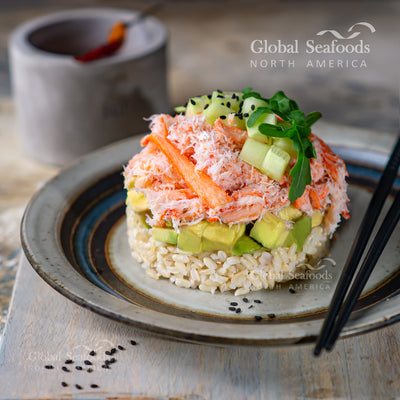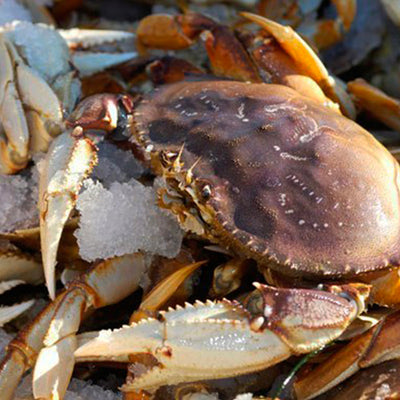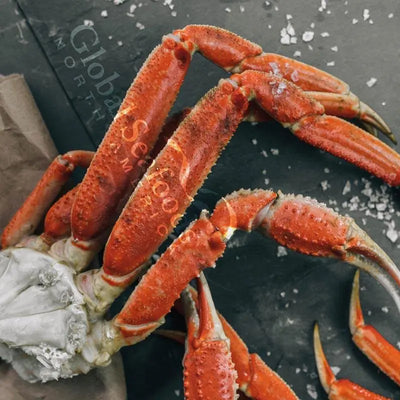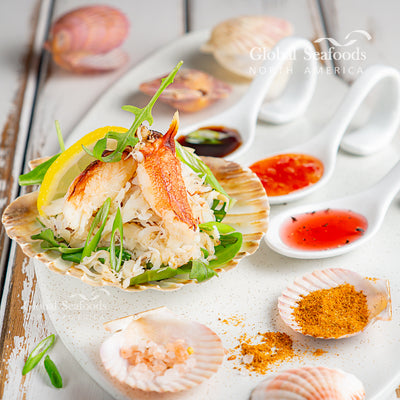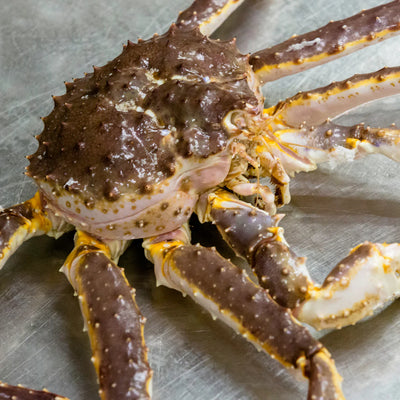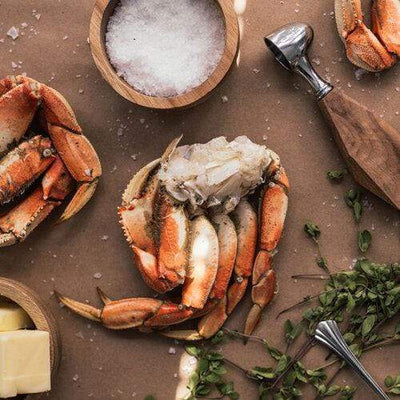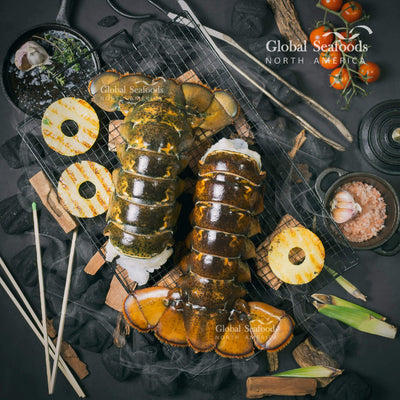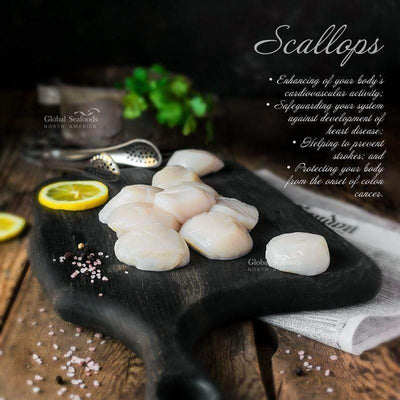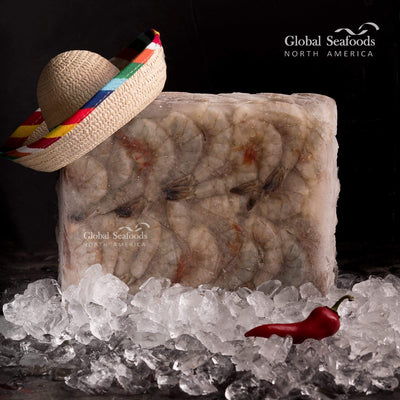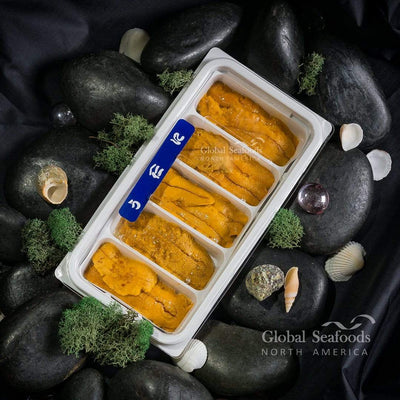Understanding the Cost of Crab Meat: Why It’s Priced Higher Than Other Seafood

Understanding the Cost of Crab Meat: Why It’s Priced Higher Than Other Seafood
Crab meat, with its sweet, tender, and succulent texture, is a favorite among seafood lovers. However, many consumers are often surprised by its premium price compared to other types of seafood like shrimp or fish. So, what makes crab meat so expensive? From the meticulous labor involved in harvesting crab to the sustainable fishing practices and the high demand for this delicacy, there are several reasons why crab meat commands a higher price tag. In this article, we will dive deep into the factors behind the cost of crab meat and explore why it’s worth considering for your seafood menu.
For those seeking top-quality crab meat, options like Dungeness Crab Meat from Global Seafoods offer the perfect balance of flavor, texture, and sustainability.
1. Labor-Intensive Harvesting Process
One of the primary reasons crab meat is more expensive than other seafood is the labor-intensive process required to harvest it. Unlike fish, which can be caught in large quantities with nets or lines, crabs must be carefully trapped and handled individually. Once crabs are caught, the delicate process of extracting the meat begins.
Crab meat extraction is a meticulous and time-consuming process. The Merus Crab Meat from Global Seafoods, for example, is taken from the largest section of the crab's legs, where the meat is most tender and flavorful. This section requires careful handling to maintain the meat’s quality, adding to the labor costs and, ultimately, the price of the product.
Labor Costs Drive Prices Up:
- Crab fishing involves small catches and precise handling.
- Extracting meat is time-consuming and often done by hand.
- Workers must separate shell fragments from the delicate meat.
As Chef Gordon Ramsay famously said, "Quality requires effort." This effort is a key reason behind the higher cost of crab compared to more easily harvested seafood like shrimp or cod.
2. Limited Fishing Seasons and Sustainability
Another significant factor influencing the cost of crab meat is the limited fishing seasons imposed by sustainability practices. Crab populations, particularly species like Dungeness Crab and King Crab, are carefully managed to prevent overfishing and ensure the long-term health of the species.
Crab fishing seasons are often short, with specific quotas set by regulatory bodies to avoid depleting populations. For example, Dungeness Crabs can only be harvested at certain times of the year, meaning that supply is limited. This restricted availability, combined with strong demand, naturally drives up prices.
Sustainability Measures Impacting Supply:
- Strict quotas limit the number of crabs that can be harvested each season.
- Short fishing seasons mean crab isn’t always available year-round.
- Sustainability certifications, such as MSC (Marine Stewardship Council), often come with added costs for producers.
Sustainable practices are vital for the future of our oceans, and as Sylvia Earle, a renowned marine biologist, said, “The ocean is alive, and we need to treat it as such.” Sustainable crab harvesting ensures that we can continue enjoying this delicacy for generations to come.
To ensure you’re supporting sustainable seafood, consider purchasing from suppliers like Global Seafoods, who prioritize responsible fishing practices.
3. High Demand for Premium Seafood
Crab is regarded as a luxury item in many parts of the world, with high demand driving up prices. Gourmet restaurants, seafood lovers, and health-conscious consumers all seek out crab for its exceptional flavor, texture, and nutritional value.
Unlike more common seafood options, such as tilapia or pollock, crab is considered a delicacy. High demand combined with limited supply leads to premium pricing. The unique taste and texture of crab make it a highly sought-after ingredient in upscale dining, special occasions, and holidays.
Crab as a Luxury Food:
- Crab dishes are often associated with gourmet dining experiences.
- Holidays like Thanksgiving and Christmas see spikes in demand for crab.
- Its reputation as a "special treat" makes crab a premium product year-round.
If you want to add a touch of luxury to your menu, consider Crab Meat from Global Seafoods, which will appeal to discerning customers seeking high-end seafood.
4. Transportation and Storage Costs
Crab is a perishable seafood product that requires careful handling, refrigeration, and sometimes freezing to ensure freshness. Unlike other seafood that can be frozen for longer periods without compromising quality, fresh crab needs to be shipped and stored under very specific conditions.
Crabs are often caught in remote locations, such as the icy waters of Alaska or the Pacific Northwest, and must be transported quickly to markets around the world. The costs associated with this rapid transport, refrigeration, and storage all contribute to the higher price consumers see at the market.
Key Logistics Affecting Crab Pricing:
- High transportation costs due to remote fishing locations.
- Special storage requirements to maintain freshness.
- Limited shelf life, leading to higher costs for unsold products.
For premium, fresh crab delivered directly to your kitchen, consider Dungeness Crab Clusters from Global Seafoods, ensuring quality seafood without sacrificing freshness.
5. Nutritional Value and Health Benefits
One reason crab meat justifies its higher cost is its exceptional nutritional value. Crab meat is rich in high-quality protein, omega-3 fatty acids, vitamins, and minerals, including vitamin B12, selenium, zinc, and copper. These nutrients play a critical role in promoting heart health, brain function, and overall well-being.
Crab meat is also low in fat and calories, making it an excellent choice for those looking to maintain a healthy diet. Its high protein content helps build muscle, repair tissues, and support metabolic health, while omega-3s contribute to heart and brain health.
Nutritional Benefits of Crab:
- High in lean protein and omega-3 fatty acids.
- Rich in essential minerals like zinc, copper, and selenium.
- Low in fat and calories, making it a healthy choice for weight management.
With crab meat’s combination of flavor and health benefits, adding it to your menu is not only a culinary delight but also a health-conscious decision. Products like Dungeness Crab Merus Meat from Global Seafoods offer a nutrient-packed option that can attract health-conscious customers.
6. Adding Crab Meat to Your Menu: Why It’s Worth the Investment
Given its higher price point, you may wonder whether adding crab meat to your menu is worth it. The answer is a resounding yes! Crab’s unique flavor, versatility, and nutritional benefits make it a valuable addition to any menu, especially for restaurants or events where offering premium dishes is a priority.
Crab meat can elevate your offerings, making dishes feel more luxurious and special. From classic crab cakes to innovative seafood pastas, crab provides a rich, sweet flavor that stands out. Additionally, with consumers becoming more health-conscious, offering crab can cater to those seeking nutritious yet indulgent meal options.
How Crab Enhances Menus:
- Creates premium, gourmet dishes that justify higher menu prices.
- Appeals to health-conscious customers seeking nutritious, low-fat seafood.
- Provides versatility—crab can be served in everything from appetizers to entrees.
For versatile and delicious crab products to incorporate into your menu, explore Dungeness Crab Meat from Global Seafoods, which works beautifully in everything from salads to soups and pasta dishes.
FAQs: Understanding the Cost of Crab Meat
1. Why is crab meat more expensive than other seafood?
Crab meat is more expensive due to labor-intensive harvesting, limited supply from short fishing seasons, transportation costs, and high demand for this premium seafood.
2. Does the type of crab affect its price?
Yes, different species of crab, such as King Crab or Dungeness Crab, vary in price due to factors like availability, size, and flavor profile.
3. How can I ensure I’m buying sustainable crab?
Look for seafood suppliers, like Global Seafoods, that prioritize sustainable fishing practices and offer certified sustainable products.
4. Is crab meat healthy?
Yes, crab meat is an excellent source of protein, omega-3 fatty acids, and essential vitamins and minerals, making it a nutritious addition to any diet.
5. How should crab meat be stored to maintain its quality?
Crab meat should be kept refrigerated and consumed within a few days of purchase. If buying frozen crab, ensure it’s properly thawed before use for optimal freshness.
6. Is it worth adding crab meat to my restaurant menu?
Absolutely! Crab meat is a luxurious, versatile ingredient that can elevate your menu and appeal to health-conscious customers seeking premium, nutritious dishes.
For more seafood insights and recipe inspiration, be sure to check out the Global Seafoods YouTube Channel, where you’ll find videos on everything from preparing crab to cooking with other gourmet seafood products.
Also in News

Columbia River Steelhead | Life Cycle, Conservation & Facts
Columbia River steelhead are one of the most resilient salmonid species, embarking on an incredible migration from freshwater to the ocean and back. Learn about their spawning habits, juvenile development, oceanic journey, and conservation efforts. Discover why steelhead are a prized fish for both anglers and seafood lovers.

Mastering Dover Sole: Cooking & Serving Guide for a Gourmet Experience
Dover Sole is a culinary delight known for its mild flavor and tender texture. Whether you're pan-frying for a crispy finish, baking for a healthy meal, or grilling for a smoky touch, this guide provides expert tips on preparing, cooking, and serving Dover Sole. Elevate your seafood dishes and enjoy gourmet flavors at home.

Cocktail Caviar Pairings: Best Drinks to Complement Exquisite Caviar
Pairing caviar with the right cocktail enhances both flavors, turning any occasion into an indulgent experience. Learn expert tips on pairing champagne, martinis, Moscow mules, and more with the perfect caviar selection.

